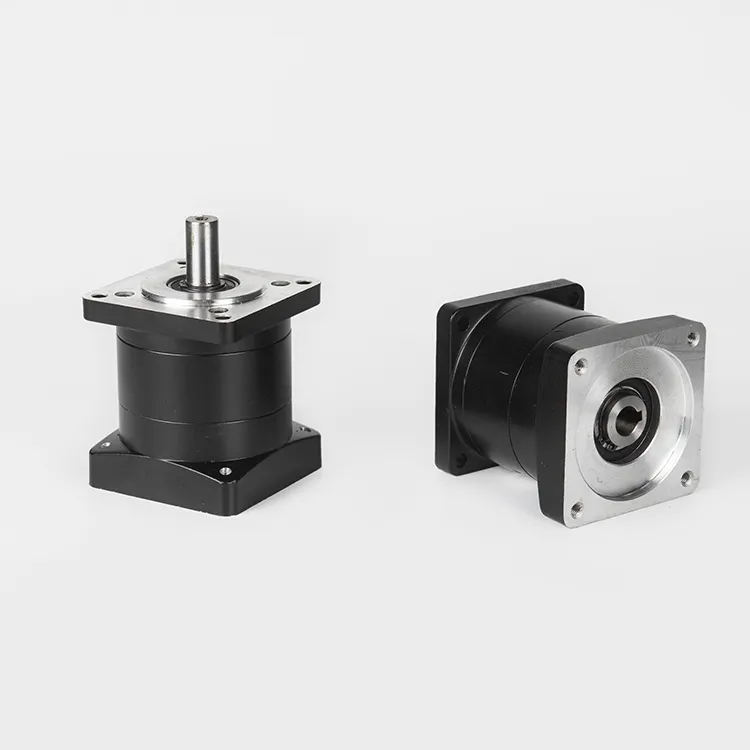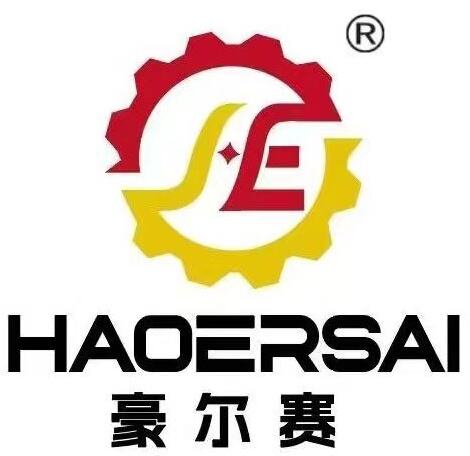Core Functions and Mechanisms of Gear Reduction Boxes
Torque Transmission and Speed Regulation in Industrial Systems
Gear reduction boxes are essential components that boost how well industrial machines work by making sure power gets transferred properly. They let big equipment handle different loads without breaking down or losing power. When manufacturers set up particular gear ratios inside these boxes, they control how fast things move, matching what goes in with what comes out. This matters a lot in places needing exact movement control, think cars on assembly lines or robotic arms in factories. Real world tests show these gear systems perform better over time, which explains why so many plants keep relying on them despite newer alternatives coming along. For anyone running heavy machinery day after day, getting the right gear reduction setup can mean the difference between smooth operations and constant breakdowns.
Precision Engineering for Power Density and Load Handling
Getting the engineering right in gear reduction boxes matters a lot when it comes to packing powerful performance into smaller spaces. The secret lies in picking just the right materials and following smart design rules that let these components handle heavy loads without breaking down. Good designers know how to balance different factors so their gears last longer even when pushed hard in tough conditions. According to recent studies across manufacturing sectors, better engineered systems are failing far less often now compared to older models from just five years ago. That's why many factories and machinery shops keep coming back to precision built gearboxes time after time they simply work better under stress and need fewer replacements over their lifespan.
Key Industrial Applications of Gear Reducers
Mining and Heavy Machinery Operations
In the mining industry, gear reducers are essential components that deliver the massive torque required for complex operations like drilling deep into rock formations or excavating tough materials. These durable mechanical systems keep large machines running smoothly, which makes a real difference in operational expenses over time. Research indicates that when mining companies incorporate gear reduction tech into their equipment fleets, they often see better performance from their machines. Some reports suggest operational costs can drop around 20% in certain applications. Beyond just saving money though, these improvements actually enhance worker safety on site since machines handle loads more predictably. When operators need to manage heavy payloads or control sudden accelerations during blasting operations, properly functioning gear reducers help prevent dangerous situations from developing. That's why most experienced miners will tell anyone who asks that reliable gear reduction systems aren't just nice to have they're absolutely necessary for day to day operations underground.
Automated Production Lines in Manufacturing
Gear reduction boxes form a critical part of manufacturing operations, keeping automated production lines running smoothly while maintaining consistent speeds and process efficiency. These systems boost the accuracy of how materials get handled during assembly, something manufacturers need to maximize their output and reduce costly stoppages. Real world tests show plants can see around a 30% jump in productivity when they install proper gear reducer systems in their automation setups. The main benefit comes from better control over machine speeds and more accurate mechanical movement, making these reduction systems key players in streamlining factory work. As companies look to improve both product quality and overall efficiency, investing in good gear reduction technology remains a smart move for most manufacturing operations.
Material Handling Solutions Enabled by Gear Reduction
Conveyor Systems for Bulk Material Transport
When it comes to moving large volumes of materials around, gear reduction tech makes all the difference for conveyor systems. Gear reducers help these systems carry stuff across long stretches without losing much power along the way. Get the right gear reducer installed and the conveyor belt runs just right speed for whatever load needs carrying, something that matters big time in places like farms and mines where downtime costs money. Some actual numbers back this up too industry studies show that when companies put gear reducers into their conveyor setups, they typically cut down on energy usage somewhere around 15 percent. That kind of saving adds up fast, making gear reduction not just good for the bottom line but also helping operations run greener while still getting the job done day after day.
Overhead Cranes and Lift Mechanism Optimization
Reduction gear boxes play a critical role when it comes to making overhead cranes work properly, affecting both safety and how well things get done around the shop floor. These gears let operators control exactly how fast something lifts and what weight it can handle, which cuts down on accidents and keeps materials from getting damaged while parts are being assembled or shipped out. Looking at actual numbers from workplace safety checks shows companies that upgrade to better gear reduction systems tend to see fewer incidents where people get hurt during lifting tasks. The combination of safer conditions plus faster operations means these gear systems aren't just nice to have they're actually essential for most manufacturing environments where heavy lifting is part of daily operations.
Specialized Gearbox Types for Modern Industry
High-Torque Worm Gearboxes for Compact Spaces
Worm gearboxes with high torque capability excel at converting power efficiently even when space is limited, all while keeping things compact. What makes these boxes stand out? They handle massive reductions in speed ratios which is why they show up so often in robotic arms and conveyor belt setups across factories. The way worm gears are built gives manufacturers real benefits when it comes to fitting machinery into tight spots and running operations smoothly. According to recent industry reports, companies that switch to these high torque models tend to gain better control over their designs and cut down on setup time during installations. For manufacturing plants trying to make the most of every square inch and minute of operation, investing in proper worm gearbox technology really pays off in both physical space savings and workflow improvements.
Planetary Gear Systems for Precision Robotics
When it comes to precision work, planetary gear systems really stand out, especially important for robots that must maintain exact positions while moving quickly back and forth. The design of these gearboxes packs a lot of power into small spaces while still running efficiently, which explains why so many manufacturers rely on them in automated production lines today. Some studies suggest that switching to planetary gears can actually boost robot output somewhere around 25%, though results may vary depending on specific application requirements. For businesses looking to get more from their robotic equipment, incorporating planetary gear technology often pays off handsomely, not just in better accuracy but also through reduced downtime and maintenance costs over time.
Energy Efficiency and Sustainability Applications
Wind Turbine Pitch Control Systems
Gear reducers really matter for how well wind turbine pitch control systems work because they help adjust blade angles to get the most out of available wind. When these devices tweak the position of the blades properly, turbines can catch more wind and run better overall. Studies show that this kind of adjustment typically boosts energy production somewhere around 10%, though exact numbers vary depending on conditions. Wind industry experts have noticed that good gearbox design makes a real difference in keeping wind farms sustainable over time. Beyond just making things more efficient, quality gearboxes actually cut down on wear and tear across components. This means less frequent repairs and longer periods between maintenance checks, something that helps operators keep their wind installations running smoothly for years instead of months.
Electric Vehicle Powertrain Optimization
When it comes to electric vehicles, gear reduction boxes have become essential components for improving how power gets delivered and increasing overall efficiency. These mechanisms take the fast spinning but weak torque output from electric motors and convert it into something useful for actually moving those wheels forward, which makes a big difference in real world performance. Getting the right gear ratios sorted out during EV design matters a lot because it affects how well energy is used, and that means drivers get more miles before needing to recharge. Industry data shows cars with better gear reduction setups tend to conserve energy much better than their counterparts. What this really means is that EVs can run smoother while wasting less electricity, making them greener options on the road. Gear reduction tech remains pretty important for fine tuning electric car powertrains today, helping manufacturers address both environmental concerns and customer expectations about getting good value from each charge.

Frequently Asked Questions
What is a gear reduction box?
A gear reduction box is a mechanical device used in industrial machinery to facilitate torque transmission and regulate speed through specific gear ratios.
How does precision engineering affect gear reduction boxes?
Precision engineering enhances power density and load handling by optimizing materials and design principles, reducing wear and mechanical failure rates.
In which industries are gear reduction boxes commonly utilized?
Gear reduction boxes are essential in industries like mining, manufacturing, material handling, robotics, wind energy, and electric vehicle production.
What are the benefits of smart gearboxes?
Smart gearboxes provide real-time monitoring and predictive maintenance, leading to increased performance reliability and reduced downtime.

